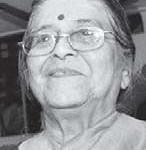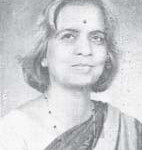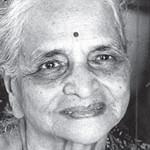The ‘Aam Aadmi’ has suddenly become the focus of attention throughout the country. This may be due to the victory of the ‘Aam Aadmi Party’ (AAP) in Delhi, which was the result of a prolonged struggle against corruption initiated by the veteran social activist Anna Hazare, and in which common man participated in big numbers.
However for many, this phenomenon is a media creation or media hype and will not sustain. Today’s ‘aam aadmi’ and the ‘common man’ immortalised by the famous cartoonist R. K. Laxman should not be compared. There are differences in composition of the aam adami of today and the common man of earlier period! The common man of R. K. Laxman was a loner while the common man of today is a collective identity with media support and articulates through modern social media. This articulation and presence of Aam Aadmi is now a phenomenon!
Hence the question is asked, where was this aam aadmi for the last few years and how did he suddenly emerge? Aam aadmi lost in “identity politics” Intellectuals, sociologists, activists and progressive supporters of aam aadmi lament that identity politics of regionalism, caste and religion have dominated the scenario since last two decades and the mobilisation of aam aadmi seen during 1970-80 on economic issues like price rise or civic issues like water, housing has been absent! The aam aadmi was lost in this ‘identity politics’.
People in Mumbai, remember huge and effective struggles of aam aadmi for water, price rise, ration, and for formation of linguistic state. People like Mrinal Gore, Ahilya Ranganekar, Tara Reddy, and Manju Gandhi, who led these struggles for basic amenities, were household names. Similar struggles in cities like Kolkata against bus fare rise are still talked about. One thing is very clear that when the common man was mobilised, it had an impact on the government, hence the struggle and participation of aam aadmi became relevant and effective. The aam aadmi was a composition of emerging middle class and toiling masses.
Mrinal Gore – the ‘Paniwali Bai’
 Mrinal Gore was a crusader of people’s movement for social justice, and women’s rights. Her contribution to bring social change in the day to day life of common masses was phenomenal. She was always in the forefront of all public actions on civic issues (water, sanitation, ration, slum demolition, petty corruption-malpractice-black marketing, bullying tactics of moneylenders) and women’s issues (crèche for working mothers’ children, women commuters’ problems, sexual harassment of nurses, workplace grievances of women workers and employees, violence against women, sex selective abortions) in Mumbai. The sobriquet of “Paniwali Bai” will always remain in collective memories of the common Mumbaikar. Her historic fast in the early 1990s for allotment of 65 acres of land to contract low cost housing for evicted footpath dwellers of Mumbai city sets her apart from all politicians.
Mrinal Gore was a crusader of people’s movement for social justice, and women’s rights. Her contribution to bring social change in the day to day life of common masses was phenomenal. She was always in the forefront of all public actions on civic issues (water, sanitation, ration, slum demolition, petty corruption-malpractice-black marketing, bullying tactics of moneylenders) and women’s issues (crèche for working mothers’ children, women commuters’ problems, sexual harassment of nurses, workplace grievances of women workers and employees, violence against women, sex selective abortions) in Mumbai. The sobriquet of “Paniwali Bai” will always remain in collective memories of the common Mumbaikar. Her historic fast in the early 1990s for allotment of 65 acres of land to contract low cost housing for evicted footpath dwellers of Mumbai city sets her apart from all politicians.


Pramila Dandavate, was a prominent champion of women’s rights. Elected to the Lok Sabha from a Mumbai constituency in the seventies, she along with Mrinal Gore and other women social activists had participated in many agitations in Maharashtra against the price hike, an era characterised by latne morcha, taken out by a large number of women carrying rolling pins. The “rolling pin marches”, spearheaded by Mrinal Gore, Pramila Dandavate and Ahilya Rangnekar, forced at least one Congress minister in Maharashtra to promise that the ration cards that were held back would be issued to the poor. All three were imprisoned during Emergency.
Mrinal Gore, Pramila Dandavate, Tara Reddy, Manju Gandhi, Ahilya Rangnekar and Sudha Varde had genuine sisterhood amongst them despite differing political party allegiance. They believed in team work and quoted a slogan “women united will never be defeated.”
The aam aadmi is still struggling
All this has changed. The middle classes and toiling masses have lost the historic unity built over the years. The aam adami is still struggling. The struggle of Narmada Dam oustees, the struggle of displaced farmers in Orissa who fought against mining, struggle against ‘SEZ’ are just a few examples. Similarly, since 1982 trade unions have formed a joint action committee and every year thousands of workers march to Parliament and also conduct All India strike to draw attention of the public to several pressing issues that affect the working class. In a historic ‘March to Parliament’ led by trade unions on 21 and 22 February 2011, more than two lakh workers assembled in the national capital to demand control on price rise of essential commodities, strict enforcement of labour laws, linkages of employment protection with the stimulus package and to stop privatisation of central public sector enterprises, among other demands. This was once again followed by the ‘March to Parliament’ on 12 December 2013 to campaign for their 10 charter of demands.
Unfortunately, the free press in India, particularly the main stream media, failed to report this event. All these examples show the anger, frustration and rising expectation of aam aadmi! It is unfortunate though that the double digit inflation, rise in fuel prices and many important civic issues, today fail to effectively mobilise the middle class; and even if it does, the result or their capacity to influence political and economic forces creates an impression that the aam aadmi is not responding to the call of protests!
The change in technology, welfare schemes and affordable education, along with struggles of sections of middle classes (In earlier period of mixed economy) like teachers, bank and insurance employees, workers of monopoly houses or multinational companies and government employees helped in creating a sizeable middle class. This category of aam aadmi is influenced by economic policies pursued in the name of reform. The growing culture of consumerism and free market economy has given this class better living conditions and opportunities, and hence this class is enamoured by the change! This class has distanced itself from the toiling masses and hence the struggles of toiling masses fail to have political impact. The middle classes emerged from the struggles of 1970-80 and due to welfare policies of the government. But having prospered, they feel threatened by the demands and aspirations of the toiling masses for equal opportunity and social and economic justice! Hence the shift to right and identity politics which is an answer to class differences and conflicts.
There is hope for the future
This impression has changed after the Aam Aadmi Party‘s (AAP) victory in Delhi. This leads to a very important conclusion. The middle class is important to the movement of aam aadmi and so far the changes in the society have resulted in breaking the alliance of middle classes and toiling masses…i.e aam aadmi.
As corruption and problems of governance take centre stage along with growing concern about inflation and economic slowdown, we see a commonality of interests amongst the middle classes and toiling masses re-emerging and bringing the common man or the ‘Aam Aadmi’ into focus. However the real test will come when policy issues come to forefront. The future of Indian democracy depends on this. If the pressure of aam aadmi succeeds in creating space for equal opportunity and protection and improvement of public services, we will have a strong democracy. Otherwise in the name of good governance and development we will have ‘depoliticisation of development’ and authoritarian rule and identity politics. “Revolt of the masses”, in the last century gave us democracy and idea of socio economic justice and fairness, now we may have to witness repression, submission of the masses in the name of development. But signs are positive all over the world and we can describe it as the ‘RISE of AAM AADMI or COMMON MAN.’

